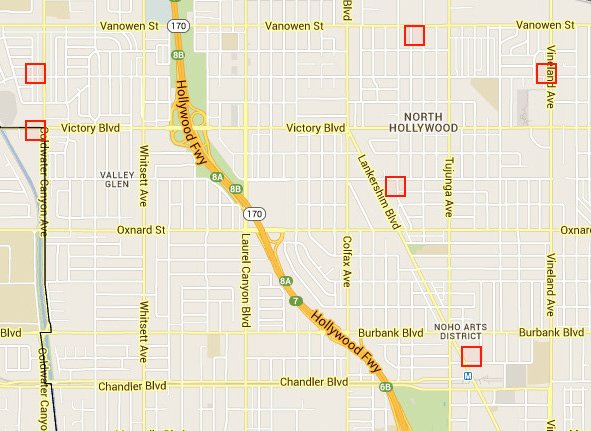Predictive Modeling and Crime Control in Memphis and LA
DATA
New predictive models using geospatial data on crime patterns allow police forces in the US to improve crime prevention strategies
IMPACT
IBM’s Blue CRUSH software reduced serious crime 30 percent and violent crime 15 percent, and PredPol is twice as accurate as previous methods in predicting crime

Photo: Sean Davis, “Street Scene,” Memphis, TN, USA. Accessed from http://flic.kr/p/ek1Mif. Creative Commons BY-ND license available at https://creativecommons.org/licenses/by-nd/2.0/. No changes were made.
In 1997, the National Institute of Justice selected five cities to participate in a pilot program incentivizing data-driven solutions to crime prevention. Memphis, Tennessee, one of the cities chosen, developed Blue CRUSH (Criminal Reduction Using Statistical History), a predictive analytics system that tracks crime patterns over time. Over the next decade, the National Science Foundation funded research for similar initiatives. PredPol, a predictive policing technology to identify crime hotspots, was among the crime modeling applications developed. The software, created by researchers at the University of California-Los Angeles and Santa Clara University, was piloted by the Los Angeles Police Department (LAPD) and is now used in multiple cities throughout the country.
Strong Impacts on Crime
In Memphis, successful results from the Blue CRUSH pilot led to a citywide rollout in 2008. The system was correlated with large reductions in serious and violent crimes between 2008 and 2011. By 2014, murders and robberies were both down 36 percent, while motor vehicle theft was down 55 percent.1 In the case of PredPol, a 21-month randomized pilot study in Los Angeles in 2011 found that the software was considerably more accurate than existing best practice methods in predicting crime locations. In one neighborhood, crimes dropped by 13 percent in the first four months of Predpol’s use; in the areas of the city where Predpol was not implemented, crime increased by 0.4 percent.2 As a result of this success, PredPol has since been expanded citywide in other major cities, including Atlanta and Seattle.
The Challenges Ahead
The willingness of the LAPD to utilize new approaches is a credit to the flexibility of the department and its belief that predictive modeling is a complement and not a replacement for police personnel. Other police agencies, however, have been hesitant to utilize the new methodologies, largely due to budgetary pressures and general resistance to change. In addition, more rigorous independent evaluations are needed to assess the degree to which factors other than predictive techniques are responsible for the general decline of crime in the US.3 Critics also point out that predictive policing can lead to unnecessary questioning and excessive stopping-and-searching in predicted crime areas.4

A map of several Los Angeles neighborhoods showing crime hotspots predicted by PredPol. The software bases its predictions on types, locations, and times of past crimes, as well as criminal behavior patterns. Source: PredPol
Graphic: Obtained from Predpol. Used with permission.
References
1. Peck, Chris. 2013. “Blue CRUSH Controversy.” The Commercial Appeal, January 27, 2013. http://www.commercialappeal.com/opinion/blue-crush-controversy (accessed April 8, 2015)
2. Gupta, Shalene. 2014. “Bright Lights, Big Cities, Bigger Data.” Fortune Magazine. October 30, 2014. http://fortune.com/2014/10/30/bright-lights-big-cities-bigger-data/ (accessed April 7, 2015)
3. Bond-Graham, Darwin, and Ali Winston. 2013. “All Tomorrow’s Crimes: The Future of Policing Looks a Lot Like Good Branding.” SF Weekly. October 30, 2013. http://www.sfweekly.com/sanfrancisco/all-tomorrows-crimes-the-future-of-policing-looks-a-lot-like-good-branding/Content?oid=2827968 (accessed April 6, 2015)
4. Berg, Nate. 2014. “Predicting Crime, LAPD Style.” The Guardian, June 25, 2014. http://www.theguardian.com/cities/2014/jun/25/predicting-crime-lapd-los-angeles-police-data-analysis-algorithm-minority-report (accessed April 8, 2015)